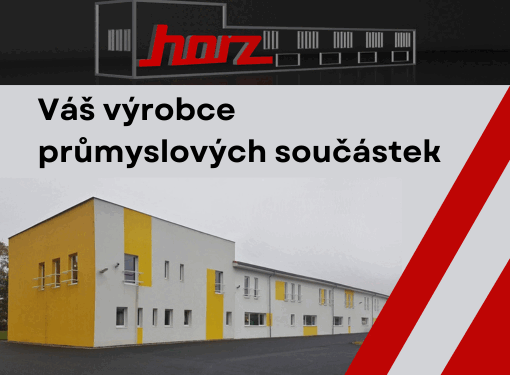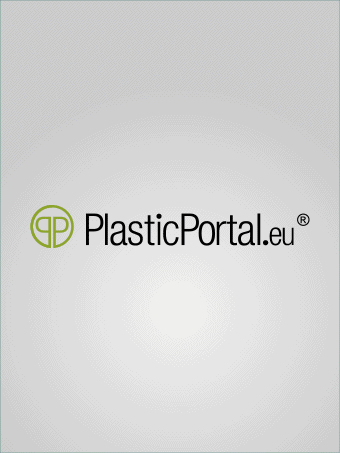Weekly commodity price report
Here are the market prices of various types of commodity plastics PE-LD, PE-HD, PP and PS in Central and Eastern Europe with a delay of 5 weeks. The data was processed by our partner myCEPPI.
Are you interested in current prices for commodity plastics? You can order Weekly polymer price reports from our editors.
Prices for this week 2/2018
The following factors influenced “commodity” polymer prices and price expectations last week:
- BRENT oil price 68.07 USD/barrel, slightly increasing
- EUR/USD: 1.2069, getting stronger
- Naphtha: 590.15 USD/t, increasing price tendency
- propylene (C3) contract price increased: +20 €/ton
- ethylene (C2) contract price „roll-over”
- styrene monomer (SM): increased +10 €/t
- for the time being low demand
Last week the market was awakening, producers have published their price lists only in the second half of the week, on Thursday and Friday. In this way, in our report, we cannot give a complete picture about the market.
But it is visible that as we have forecast, the PE and PP price tendency seems to split in 2018. While in case of PP producer used their best efforts to increase prices at least at the pace of propylene monomer prices, in case of PE typically roll-over, corrective price reduction and slight price increase were alike typical. Most producers have published their prices only as late as in the second half of the week, due to this there were just a few transactions on the market. WE producers have rather tried to increase PE and PP prices alike, in case of PP the increase of the spread by 10-20 € was also the goal. On their main markets, even in respect of HDPE, price increase started. But local polymer producers rather remain on the ground of reality. Because of the slowly awakening market and the orthodox Christmas a real demand can be expected in the second half of the month only. With a low demand, though only the price increase of products has a reality, where supply is not too abundant. In this way, with regard to PE there was a typical roll-over, while the biggest LDPE producer approximated its prices to the market average by a slight price decrease. In case of PP an increase following monomer prices was typical.
For the PS market the SM price increase by only 10 Euro was a big surprise, as on the basis of the preliminary announcement by the producers a three digit monomer and polymer price increase could be expected. But the change of SM price was lagging behind the expectations because of the benzene price dropping in the last week of December. This fact is particularly inconvenient for the users, who, trusting in the formed statements of polymer producers, have purchased significant quantities in advance in the second half of December. PS prices increased by 10-20 €, which is easily acceptable for the converters. Now on the PS market the biggest problem is the lack of confidence and incalculability.
Incalculability is now typical for the whole “commodity” polymer market. We could already get used to the fact that the demand in a certain month highly depends on the expectations linked to the next month. Now buyers think about whether a significant price increase can be expected in February. Will the increase of monomer prices follow the increase of oil and naphtha prices? If monomer prices increase, can also polymer prices increase? There is no good and clear answer. Our opinion is that due to the increasing supply market players will ask these questions again and again, every month, during the next years to come. This speculation will last until the consolidation of the market situation and of the expected oversupply.
Polyolefin grades
During the first week LDPE prices remained unchanged compared to the last week of December, their typical trading range was 1,170-1,270 €. The bottom of the range is the direct price after the deduction of the bonuses and payment allowances for converters. While the highest price is the price for smaller lots, typically sold by distributors. The average price range is 1,210-1,220 €. Supply is good, regional producers have got significant stocks. The new LDPE plant of MOL (Slovnaft) seems to be operating with full capacity this year, and this will significantly increase regional supply. There is again a high quantity of LDPE from Russian present, first of all on the Polish market. But in the SCE region now the supply of materials from Iran is lower. For the time being buyers, the packaging material industry are still waking up, demand tendencies are not yet clear.
It is good news for the HDPE market that WE prices are already significantly higher than those in CE. In this way oversupply is expected to drop. Also regional producers can export with profit to Western Europe. This might make space for the monomer price increase at the end of February (if any) to increase also local, regional price levels at last. At the present the HDPE market price level did not change compared to the end of December. In the SCE region the local producer did not increase the price because of the lacking demand and the orthodox Christmas, here the price are still typically in a range of 1,050-1,090 €/t. In the central region (MCE) the price range is 1,080-1150 €, depending on the grade and the application. Similarly to the northern, Polish market. Of course extraordinary lots appear also on this market, so is HDPE BM in a price range of 1,030-1,050 €/t, first of all from Ukrainian source, but this is not typical.
In case of HDPE pipe (100) we still report about December prices (1,350-1,430 €). For the time being actual prices are not yet known to us, but in our opinion a price increase by some 20 Euro is probable, while demand will be extremely low.
On the LLDPE C4 market the situation is unchanged, compared to the end of December direct buyer prices are in a range of 1,140-1,170 €, smaller buyers got offers in a range of 1,180-1,200 €. Orders are low. Large converters are still thinking, they would like to have prices by 10-20 € cheaper.
mLLDPE prices remained unchanged, we saw offers in a range of 1,250-1,320 € last week. Demand is low, the first more serious deals are probable next week.
Central-European PPH producers try to enforce a price increase by 20-35 € following monomer prices. For the time being it is hard to assess the demand, but polymer producers seem not to have high inventories on stock, in this way the selling constraint does not retain the price increase. At the present prices are in a range of 1,080-1,200 € depending on the grade and producer. Injection molding and raffia grades with medium melt index are attainable for anyone in a price range of 1,120-1,180 €. Prices are cheapest in the SCE region, the prices of local producers are still below 1,100 €, but an expected increase of the demand will push prices up above 1,100 also here in the second half of January. There were also rumors about very cheap PPH materials from Russia at a price of 1,030 €, but this was not confirmed.
Due to the PPC supply getting shorter, the price increase by 20-30 Euro was accepted also in January. Some WE producer have tried an increase by 50 €, but this has got no chance with the exception of special grades. The typical price range is 1,220-1,300 EUR. This increase is unpleasant to the packaging material producers, who have longer contracts for three or six months, as they have to start the year with contract amendment. Demand is, mainly in the automotive and household appliances sector, good. Buyers inquired intensively as early as of the beginning of the week. However the packaging material sector still keeps waiting.
PPR prices increased also by 20-30 €, the typical price range is 1,270-1,360 €. Demand is not yet back to normal, but due to the relatively short supply converters are expected to accept the price increase without any ado.
The prices of the last week are presented in the table below (full truck load 20-22.5 t):
Grade name | Typical polymer price ranges in the first week of January, 2018, Central Europe (€/ton) |
HDPE BM | 1,000-1,130 |
HDPE Film | 1,030-1,140 |
HDPE IM | 1,000-1,140 |
HDPE Pipe (100) | 1,350-1,420 |
LDPE Film | 1,170-1,250 |
LDPE GP | 1,170-1,250 |
LLDPE C4 | 1,130-1,250 |
PPC | 1,180-1,250 |
PPH IM | 1,050-1,180 |
PPH Raffia | 1,050-1,180 |
PPR | 1,250-1,340 |
GPPS | 1,250-1,470 |
HIPS | 1,450-1,550 |
EPS | 1,620-1,750 |
Polystyrene grades
There was no high price increase in January. PS prices followed styrene monomer. With the exception of ABS, where producers increased their prices by 30-50 Euro. Based on the experiences of the first week the demand is still low, supply is changing.
European producers increased EPS prices by 10-20 €, the typical price range is 1,650-1,750 €. However the supply that seems to be low is a question mark. The reorganization of the production at Versalis weakens this further. At the present converters still collect information. We can report about real January prices in our next report only.
The cheapest GPPS prices from Iran are still linked to materials from Iran, the price range is 1,250-1,280 €, the available quantity is low. The prices of the WE polymer producers are still in the highest price range (1,420-1,500 €), while Central-European producers offer their products in a range of 1,350-1,450 €, depending on the grade and application area.
HIPS supply is still short. There are just low quantities on the market outside of Europe. At the present cheapest HIPS from Iran is available at prices of about 1,300 €. But newer shipments will certainly be more expensive than this. European producers increased prices by 20-30 €. The price range is rather broad, we see offers in a range of 1,450-1,600 €, depending on the grade, application and producer.
| Type | Price |
|---|---|
| HDPE blow molding | 1087 € / t |
| HDPE film | 1090 € / t |
| HDPE injection molding | 1081 € / t |
| HDPE pipe (100) | 1398 € / t |
| LDPE film | 1195 € / t |
| LDPE general purpose | 1204 € / t |
| PP co-polymer injection molding | 1241 € / t |
| PP homo-polymer fiber | 1148 € / t |
| PP homo-polymer injection molding | 1160 € / t |
| PPR | 1301 € / t |
| GPPS | 1400 € / t |
| HIPS | 1508 € / t |
| EPS | 1645 € / t |
myCEPPI – a new voice and new approach on the plastics industry consulting and business intelligence market. With our expert advice, you can get a detailed, up-to-date and tailor-made picture of the Central and Eastern European plastics market and its main trends, data, news and key players.
Our services rely on our personal, regular and in-depth relations with players of the CEE plastics industry.
Each month, we conduct hundreds of interviews and telephone calls with industry players – plastics converters, traders, resin manufacturers – and we are also present at the biggest regional plastics trade fairs and conferences.
The information we collect in the process forms the basis of our weekly price report and market analysis; it feeds into our plastics industry company database; and it serves as the starting point for our multi-level consulting services for companies that need help sizing up, entering or navigating a specific market.
Our experts possess decades of plastics industry experience, as well as fluency in several regional languages.
Our partners include
- key players of the CEE plastics industry – the resin
- master-batch and machinery manufacturers
- distributors, and plastics converters that shape market trends across the region.
We would be happy to welcome you as a partner; please do not hesitate to contact us!
(László Büdy, Managing director, head of consulting)
Price history
- 2024:
- 2023:
- 2022:
- 2021:
- 2020:
- 2019:
- 2018:
- 2017:
Latest Classifieds
-
05.03.2024 | ID: 202418726
Top Advert -
18.04.2024 | ID: 202418992
-
18.04.2024 | ID: 202418991
-
18.04.2024 | ID: 202418990
To purchase: PPSU regrind banner
17.04.2024 | ID: 202418988
For Sale: Packaging press PL 12
17.04.2024 | ID: 202418987
To purchase: POM C regrind colour, white, natur
17.04.2024 | ID: 202418986
-
16.04.2024 | ID: 202418984
-
15.04.2024 | ID: 202418980
To purchase: PPSU regrind banner
17.04.2024 | ID: 202418988
To purchase: POM C regrind colour, white, natur
17.04.2024 | ID: 202418986
To purchase: Package quality LDPE film. 500 t/month
15.04.2024 | ID: 202418966
To purchase: Dirty granulates from ground
15.04.2024 | ID: 202418964
To purchase: PC and PMMA waste, regrinds, lumps etc.
11.04.2024 | ID: 202418943
To purchase: PET transparent trays, only Central Europe due to shipping costs
10.04.2024 | ID: 202418939
To purchase: PA6.6 GF25, TECHNYL A218, original
09.04.2024 | ID: 202418928
-
09.04.2024 | ID: 202418927
-
09.04.2024 | ID: 202418924
-
05.03.2024 | ID: 202418726
Top Advert -
18.04.2024 | ID: 202418992
-
18.04.2024 | ID: 202418991
-
18.04.2024 | ID: 202418990
For Sale: Packaging press PL 12
17.04.2024 | ID: 202418987
-
16.04.2024 | ID: 202418984
-
15.04.2024 | ID: 202418980
For Sale: PP vstrekovací - drť biela
15.04.2024 | ID: 202418979
For Sale: Drť EVA Escorene UL00514
15.04.2024 | ID: 202418978
Upcoming Events
22.04.2024 - 26.04.2024 | Hannover
22.04.2024 - 26.04.2024 | Sao Paulo
23.04.2024 - 25.04.2024 | Maastricht
23.04.2024 - 26.04.2024 | Shanghai
23.04.2024 - 26.04.2024 | Wels
23.04.2024 - 25.04.2024 | Varšava
06.05.2024 - 10.05.2024 | Orlando
Saudi Plastics and Petrochem 2024
06.05.2024 - 09.05.2024 | Rijád
06.05.2024 - 09.05.2024 | Stuttgart
15.04.2024
16.04.2024
16.04.2024
17.04.2024
17.04.2024
Training - Injection moulding technology I.
15.04.2024
Festival of personnel and talent development
16.04.2024
17.04.2024
Training - Injection moulding technology II.
17.04.2024
17.04.2024
Job offers
-
11.04.2024
Plastic worker, gluing staff - FORM s.r.o.
10.04.2024
Logistics, warehouse and shipping supervisor - KNP s.r.o.
09.04.2024
Warehouseman - AIS Automotive Interior Systems Slovakia s.r.o.
09.04.2024
Sales representative / sales specialist - Plastcom, spol. s r.o.
04.04.2024
Maintenance and operation of the production line - Plastcom, spol. s r.o.
04.04.2024
Quality control technician - ESOX-PLAST s.r.o.
04.04.2024
Master of professional training - ESOX-PLAST s.r.o.
04.04.2024
Store manager - Ecocycle s.r.o
25.03.2024
Branch Dictionary






